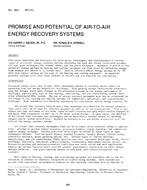Click here to purchase
Thermic plastic films with infrared (IR) reflective additives are one of the most widely used materials for improving winter heating for greenhouses, low and high tunnels, and soil mulch. They are almost transparent to visible solar light and opaque (via reflection) to longwave IR radiation. However, such films cannot fully utilize the solar near-infrared (NIR) power that occupies 40% to 60% of overall solar irradiance. In recent years, many studies of the optical properties of nanoparticles (NPs) have found that due to the phenomenon of localized surface plasmon resonance (LSPR), a few plasmonic NPs show strong extinction peaks in the NIR region of the electromagnetic spectrum. Based on these NPs, an LSPR-based solar NIR-selective photothermal film was developed. NIR power from the sun enters through the greenhouse covering and is absorbed by the film and converted to thermal energy (longwave radiation), warming the inside space and plants. In this research, the thermal behaviors of this photothermal film were numerically analyzed under solar radiation. The results show that compared to basic IR plastic greenhouse coverage, a 16.5~ 21.8% heating load reduction can be obtained in winter under typical solar irradiance. These savings are not achieved by increasing the thermal insulation via additional layers or insulating materials, but rather by the spectrally selective design of coating materials and utilization of solar NIR energy.
Product Details
- Published:
- 2021
- Number of Pages:
- 8
- Units of Measure:
- Dual
- File Size:
- 1 file , 4.1 MB
- Product Code(s):
- D-VC-21A-C022
- Note:
- This product is unavailable in Russia, Belarus


